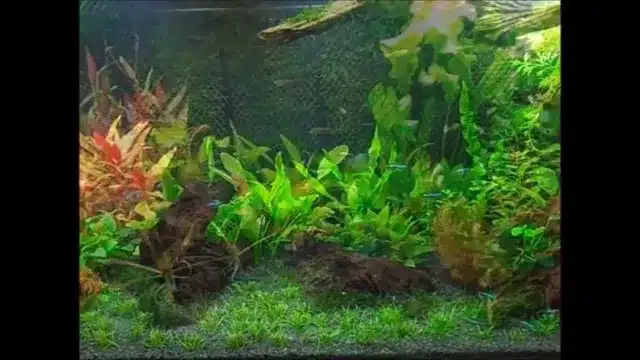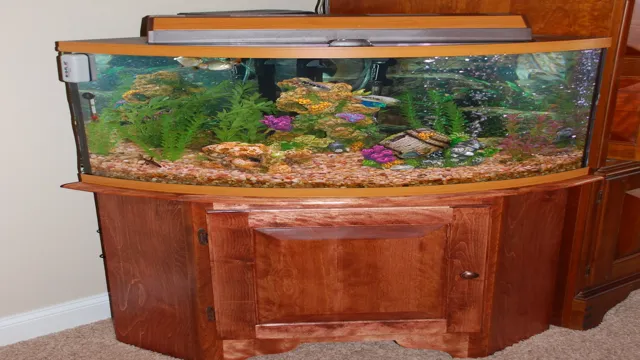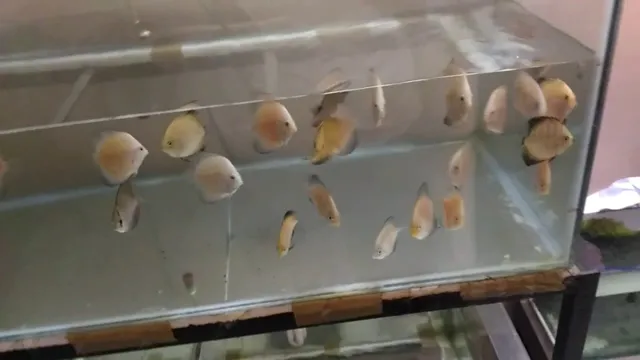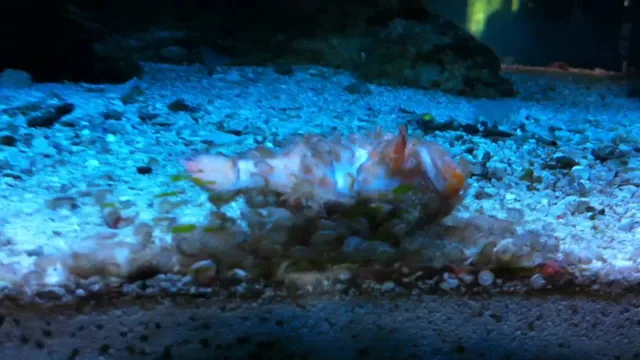Looking for an aesthetic way to upgrade your aquarium? Adding moss to the walls is a great option! It not only adds a natural touch to the environment but also improves the quality of water. However, growing moss on the aquarium wall can seem a little daunting, especially if you have high light conditions. But fear not, because in this blog post, we will teach you everything you need to know about growing moss on aquarium walls with high light conditions.
So, get ready to learn the secrets to keeping your moss vibrant and healthy!
What You Need
If you’re looking to add a natural touch to your aquarium and create a mesmerizing wall of green, growing moss is a great way to achieve it. However, growing moss on aquarium walls under high light conditions can be a bit challenging, but with the right tools and knowledge, it can be done. To start with, you’ll need high light intensity and a nutrient-rich substrate for the moss to grow on.
Next, you’ll need to choose the right type of moss for your aquarium. Java moss and Christmas moss are popular choices that do well in high light conditions. You’ll also need to ensure that the moss receives plenty of carbon dioxide and nutrients to promote growth.
Adding a CO2 injector or liquid fertilizers can help with this. Finally, maintenance is key when growing moss on aquarium walls. Regular trimming and cleaning can prevent the moss from overcrowding and losing its shape.
With patience and proper care, you’ll soon have a stunning moss-covered aquarium wall that adds a natural and beautiful touch to your underwater world.
Aquarium Moss
Aquarium moss is a beautiful addition to any aquarium that provides a lush and natural look. However, before adding aquarium moss to your setup, there are a few things you should consider. Firstly, ensure that you have the right aquarium setup and lighting that is suitable for the specific type of moss you want to install.
This ensures that the moss receives the necessary nutrients and light it needs to thrive. Secondly, consider the compatibility of the moss with your aquarium inhabitants, such as fish and shrimp. Some types of aquarium moss may be eaten or destroyed by certain species.
Lastly, ensure that the moss is properly cleaned and quarantined before adding it to your aquarium to prevent potential contamination from pests or diseases. Overall, by taking these factors into account, you can ensure that your aquarium moss thrives and contributes to the visual appeal of your aquarium.
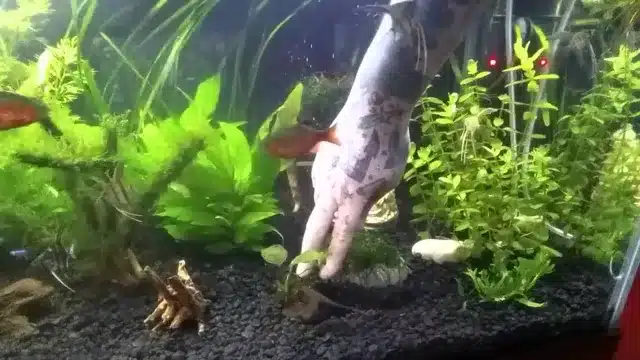
Lighting Equipment
When it comes to lighting equipment, there are a few key items you’ll need to get started. First and foremost, you’ll need some sort of light source. This could be a basic desk lamp with a bright bulb, or a more professional lighting kit that includes softboxes or umbrellas to diffuse the light.
Additionally, you may want to invest in some light stands to position your lights at the right height and angle. To control the intensity and direction of the light, you’ll also need some light modifiers like reflectors, diffusers, or grids. It’s important to choose the right equipment for your needs and budget, as there are many options available on the market.
With the right lighting equipment, you can create professional-looking images that stand out from the crowd and capture your unique vision. Don’t be afraid to experiment and find what works best for you and your creative style.
Water Quality
Water quality is essential to our health and well-being. Most of us take it for granted that the water we drink is clean and safe, but that’s not always the case. There are many things that can affect water quality, such as pollution, chemicals, and natural contaminants like bacteria or viruses.
That’s why it’s important to test your water regularly and take measures to improve it if necessary. This includes installing a water filtration system, monitoring your water usage, and being mindful of what you pour down the drain. By taking these steps, you can ensure that your family is drinking and using water that is safe and healthy.
Remember, water is essential to life, so it’s crucial that we protect it and keep it clean for future generations to come. (See Also: How to Make a Small Aquarium Community: A Step-by-Step Guide for Beginners)
Preparing the Aquarium Wall
Growing moss on the aquarium wall in high light conditions can enhance the vibrant colors and patterns of fish and plants, and create a stunning visual display in any aquatic setup. Before starting the process, it’s important to prepare the aquarium walls properly. Begin by cleaning the glass with a scraper or brush to remove any algae, debris or hard water stains.
Ensure that the glass is completely dry before proceeding to the next step. Next, adjust the lighting in the aquarium to provide adequate illumination for the moss to grow. High light conditions are necessary for moss to thrive.
Avoid direct sunlight, as it can cause excessive algae growth and harm to the aquarium inhabitants. Finally, place a moss substrate on the bottom of the aquarium to provide a fertile base for the moss to attach and grow. Follow these steps to prepare your aquarium for a stunning moss wall, which will improve the overall aesthetics and health of your aquatic environment.
Clean the Wall
Cleaning the wall before setting up an aquarium is an essential step that cannot be ignored. Even if the wall may seem clean to the naked eye, it could be covered in invisible grime that can harm your aquatic pets. To prepare the wall, start by removing any visible dirt or dust using a soft sponge or cloth.
Dip the sponge or cloth in warm water mixed with mild soap and gently scrub the wall, covering every inch, including corners and edges. Afterward, rinse the wall thoroughly with warm water to remove any soap residue. Dry the wall using a dry cloth or towel before proceeding to the next steps of preparing your aquarium.
By ensuring the wall is clean, you not only create a safe and healthy environment for your aquarium pets, but you also provide an aesthetically pleasing view of your aquarium for all to enjoy. Remember, cleanliness is key, and every little effort towards it goes a long way in ensuring a happy, healthy environment for your aquatic pets.
Attach Mesh to Wall
When it comes to setting up an aquarium, attaching the mesh to the wall is an essential task. Before attaching the mesh, you need to prepare the aquarium wall for it. The first step is to clean the area where you plan on attaching the mesh.
Make sure there’s no dirt, dust, or debris on the wall. This will help the mesh adhere better to the wall. Next, measure the area where you plan on attaching the mesh and cut the mesh accordingly.
Once you have the right size of the mesh, you can attach it to the wall using silicone sealant or glue. Make sure to apply the sealant or glue evenly and leave it to dry completely before attaching the mesh. By preparing the aquarium wall properly, you can ensure that the mesh stays in place and provides the support your aquarium needs.
So, take your time and follow these steps carefully to attach the mesh securely to the wall.
Planting the Moss
If you’re looking to add an extra level of beauty to your aquarium, growing moss on the wall is a fantastic option. The process can be a bit tricky, especially if you have a high light tank. Moss needs a few specific things to thrive, including a stable environment and plenty of light.
To start growing moss on your aquarium wall, it’s essential to have a healthy plant to begin with. Once you’ve found the perfect specimen, attach it to a suitable surface. You can do this by using thread or glue.
Then, place the plant in direct light, making sure it receives plenty of nutrients and carbon dioxide. Be sure to monitor it daily, checking its growth progress and adjusting the lighting and nutrient levels as needed. With a little patience and some TLC, your moss should start to grow in just a few short weeks, giving your aquarium an added dose of natural beauty.
Handle the Moss Carefully
If you’re planning to add moss to your garden or indoor space, it’s important to handle it carefully to ensure its survival. Moss is a delicate plant that requires a specific environment to thrive. When planting moss, it’s essential to remove any debris or dead leaves from the area before adding it. (See Also: How to Make Aquarium Water Blue: Step-by-step Guide and Tips)
This will allow the moss to grow more effectively and prevent any unwanted insects or pests from affecting its growth. Additionally, avoid walking on the moss or disturbing it too much, as this can cause damage to the plant and disturb its growth. Think of the moss as a fragile carpet that needs to be treated gently if you want it to survive.
By handling the moss with care and providing it with the right growing conditions, you can enjoy a lush green space that’s both beautiful and calming to the eyes. Remember, moss is not just a plant but an ecosystem that supports various organisms, so let’s handle it with care and responsibility.
Attach the Moss to Mesh
When it comes to planting moss, attaching it to mesh is a popular method worth trying out. Firstly, make sure you have your moss and mesh ready. Then, dampen the moss using water, as this will help it to stick to the mesh more easily.
Take the mesh and place it on top of the moss, with the rough side facing down. Gently press down on the mesh, ensuring it sticks well to the moistened moss, and let it sit for a few moments so they can bond together. Once you’ve attached the moss to the mesh, you can then use the mesh to anchor the moss onto any surface you’d like, whether it’s rocks, logs, or wire frames.
It’s a simple and effective way to add some greenery to your space while creating a natural look and feel. Give it a try and see how it works for you!
Maintaining the Moss
If you’re looking to add some natural beauty to your aquarium, growing moss on the walls can be a stunning addition! But how can you achieve this in high light conditions? The key is to choose the right type of moss. Java Moss is a popular choice as it can tolerate a wide range of lighting conditions. To start growing moss on your aquarium walls, attach small pieces of moss to the surface using mesh or clear fishing line.
Once the moss has taken hold, trim it regularly to maintain its shape and encourage healthy growth. Remember that moss needs water to thrive, so be sure to keep the walls moist. With patience and a little bit of maintenance, you can create a picturesque wall of greenery in your aquarium that your fish will love!
Monitor Water Quality
Maintaining the Moss in your aquarium is crucial to ensuring a healthy aquatic environment for your fish. The Moss serves as a natural filter, removing harmful substances from the water and providing a habitat for beneficial bacteria. However, if not properly maintained, the Moss can become a breeding ground for algae and harmful bacteria, causing a decline in water quality.
To maintain the Moss and keep your aquarium healthy, it is important to monitor the water quality regularly. This can be done using a simple test kit that measures levels of ammonia, nitrite, and nitrate. Additionally, ensure proper water circulation and lighting to prevent the growth of harmful bacteria and algae.
With proper care, your Moss will thrive, providing a natural and beautiful addition to your aquarium while also ensuring the health and well-being of your fish.
Trim Moss
Maintaining your garden or lawn’s moss can become a tricky task if not appropriately tended to. In addition to removing debris and dead leaves from the lawn, trimming the moss bed is also significant to ensure its healthy growth. A moss bed may need to be trimmed if it has become too thick, as this could lead to poor water infiltration, block sunlight, and hinder the growth of other plants in the area.
When trimming moss, do it only on a dry day to avoid stressing the moss out. You can use a sharp pair of scissors or handheld shears to trim the moss bed. Cut the moss down to around 1 inch in height, ensuring to maintain the overall shape of the bed.
This will make it easier for the moss bed to receive adequate sunlight and water, promoting even growth. Overall, the key to nurturing a healthy and thriving moss bed is regular maintenance, including trimming, weeding, and ensuring it receives proper sunlight.
Adjust Lighting
Maintaining the moss in your home can be a challenge without the right lighting conditions. If your moss is looking a little lackluster, it may be time to adjust the lighting where it’s housed. Moss prefers low to medium light levels, so take a look at where you have it placed. (See Also: How to Clear Up Fish Aquarium: Top Tips and Tricks for Crystal Clear Water)
Is it in direct sunlight? If so, move it to a shaded area, or filter the light with a sheer curtain or window film. On the other hand, if your moss is in a dimly lit room, consider adding some supplementary light sources such as LED strips or a grow light. Be sure to monitor the moss for any signs of stress or wilting – adjusting the light levels may take some trial and error to find the perfect balance for your particular type of moss.
By providing the appropriate lighting, you can ensure that your moss thrives and remains a beautiful addition to your home.
Conclusion and Tips
Growing moss on your aquarium wall in high light conditions can be a tricky feat to master, but with patience, dedication, and a little creativity, you too can have a beautiful, lush moss wall that will impress all your fishy friends. So go ahead and experiment with different moss varieties, lighting levels, and nutrient levels. With a bit of trial and error, you’ll soon be the proud owner of a Moss Masterpiece that’s the envy of all other aquarists.
Plus, you might just discover a hidden talent for green-thumbed aquascaping that you never knew you had!”
FAQs
What is the best type of moss for growing on an aquarium wall under high light?
The best type of moss for growing on an aquarium wall under high light is typically Christmas moss or Java moss.
How often should I fertilize the moss on my aquarium wall?
It is recommended to fertilize the moss on your aquarium wall once a week with liquid fertilizer.
Can I grow moss on an aquarium wall without high light?
While moss can grow on an aquarium wall without high light, it may not thrive as well and may grow at a slower rate.
Do I need to trim the moss on my aquarium wall?
Yes, it is recommended to trim the moss on your aquarium wall regularly to promote healthy growth and prevent it from taking over the tank.
How do I attach moss to my aquarium wall?
You can attach moss to your aquarium wall using thread or fishing line, tying it in small bunches and attaching it to the wall until it can attach itself.
What is the ideal temperature for growing moss on an aquarium wall?
The ideal temperature for growing moss on an aquarium wall is typically between 72-78 degrees Fahrenheit.
How can I prevent algae growth on my aquarium moss?
To prevent algae growth on your aquarium moss, be sure to maintain proper water parameters, limit light exposure time, and add algae-eating fish or snails to your tank.

